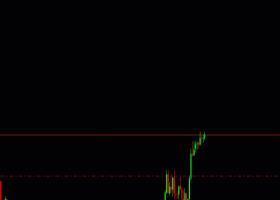VaR and CVaR analysis, why do we need it in the professional world of trading?
Value at Risk (VaR) and Conditional Value at Risk (CVaR), also known as Expected Shortfall, are risk management metrics used to estimate and quantify the potential losses in financial trading. Here's a brief overview of how to calculate risk using VaR and CVaR in the context of forex trading:
Value at Risk (VaR):
VaR represents the maximum potential loss within a specific confidence level over a given time horizon. It provides a single, summary statistic of risk exposure.
Formula: VaR = Portfolio Value × ( Z-Score × Portfolio Standard Deviation ) VaR=Portfolio Value×(Z-Score×Portfolio Standard Deviation)
- Z-Score: Corresponds to the number of standard deviations from the mean. It is based on the chosen confidence level.
Example: If you have a $100,000 trading portfolio, a 95% confidence level, and a standard deviation of 1%, the VaR would be calculated as follows: VaR = $ 100 , 000 × ( 1.645 × 0.01 ) VaR=$100,000×(1.645×0.01) In this example, the 1.645 Z-Score corresponds to a 95% confidence level.
Conditional Value at Risk (CVaR):
CVaR, or Expected Shortfall, goes beyond VaR by providing the expected loss given that the loss exceeds the VaR threshold. It measures the average loss in extreme scenarios.
Formula: CVaR = 1 1 − � ∫ − ∞ VaR � ⋅ � ( � ) � � CVaR=1−α1∫−∞VaRx⋅f(x)dx
- � α represents the confidence level (e.g., 0.05 for 95% confidence).
- � ( � ) f(x) is the probability density function of the portfolio's returns.
Example: If the VaR is $1,000 with a 95% confidence level, and the distribution of losses is known, the CVaR can be calculated using the formula above.
Steps for Calculation:
-
Calculate Portfolio Returns:
- Based on historical data or other methods, calculate the returns of your forex trading portfolio.
-
Determine VaR:
- Choose a confidence level (e.g., 95%) and calculate the Z-Score.
- Calculate the standard deviation of portfolio returns.
- Apply the VaR formula.
-
Determine CVaR:
- Use the calculated VaR as the threshold.
- Integrate the tails of the distribution beyond the VaR to compute the expected shortfall.
-
Interpretation:
- VaR provides a single-point estimate of potential losses at a specific confidence level.
- CVaR gives additional insight by providing the expected loss in the tail of the distribution.


